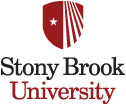Newswise — STONY BROOK, NY, December 12, 2017 – Photoelectric infrared (PIR) sensors are the current choice for occupancy presence detection in buildings. The sensors are used for smart thermostats to control heating and cooling based on occupancy. A major problem is that these PIR sensors only detect individuals who are moving. A Stony Brook University research team is developing a new type of PIR sensor that is equipped with an electronic shutter and other technologies that enable fast and accurate occupancy detection including individuals who are stationary.
The research is led by Ya Wang in the Department of Mechanical Engineering in the College of Engineering and Applied Sciences. It is supported by three-year $1 million grant – effective beginning in March 2018 – from the U.S. Department of Energy’s Advanced Research Projects Agency-Energy (ARPA-E). The new PIR sensor device is called SLEEPIR: Synchronized Low-Energy Electronically-Chopped Passive-InfraRed PIR Sensor for Occupancy Detection.
Professor Wang projects that this SLEEPIR sensor has the potential to reduce energy use in residential buildings by up to 30 percent. According to Wang, the non-mechanical oscillating technique is combined with an advanced machine learning algorithm that results in an “optical chopper” that temporarily interrupts the flow of heat to the sensor enabling the device to detect both stationary and moving individuals. She said that her research team will evaluate several approaches for the chopper, such as low-power liquid crystal technology with no moving parts.
They will also apply new signal processing techniques and machine learning to the infrared data, which has potential to define differences between people and pets and potentially between individual’s sleep and more active states.
For more information see this story.
###
About Stony Brook University
Stony Brook University is going beyond the expectations of what today’s public universities can accomplish. Since its founding in 1957, this young university has grown to become a flagship as one of only four University Center campuses in the State University of New York (SUNY) system with more than 26,000 students and 2,600 faculty members, and 18 NCAA Division I athletic programs. Our faculty have earned numerous prestigious awards, including the Nobel Prize, Pulitzer Prize, Indianapolis Prize for animal conservation, Abel Prize and the inaugural Breakthrough Prize in Mathematics. The University offers students an elite education with an outstanding return on investment: U.S. News & World Report ranks Stony Brook among the top 50 public universities in the nation. Its membership in the Association of American Universities (AAU) places Stony Brook among the top 62 research institutions in North America. As part of the management team of Brookhaven National Laboratory, the University joins a prestigious group of universities that have a role in running federal R&D labs. Stony Brook University is a driving force in the region’s economy, generating nearly 60,000 jobs and an annual economic impact of more than $4.6 billion. Our state, country and world demand ambitious ideas, imaginative solutions and exceptional leadership to forge a better future for all. The students, alumni, researchers and faculty of Stony Brook University are prepared to meet this challenge.
